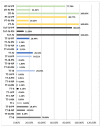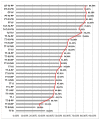HPV and Other Risk Factors Involved in Pharyngeal Neoplasm-Clinical and Morphopathological Correlations in the Southwestern Region of Romania
- PMID: 37623944
- PMCID: PMC10458356
- DOI: 10.3390/pathogens12080984
HPV and Other Risk Factors Involved in Pharyngeal Neoplasm-Clinical and Morphopathological Correlations in the Southwestern Region of Romania
Abstract
Oropharyngeal squamous cell carcinoma (OPSCC) development is strongly associated with risk factors like smoking, chronic alcohol consumption, and the living environment, but also chronic human papilloma virus (HPV) infection, which can trigger cascade cellular changes leading to a neoplastic transformation. The prevalence of these factors differs among different world regions, and the prevention, diagnosis, and prognosis of OPSCC are highly dependent on them. We performed a retrospective study on 406 patients diagnosed with OPSCC in our region that were classified according to the tumor type, localization and diagnosis stage, demographic characteristics, risk factors, and histological and immunohistochemical features. We found that most of the patients were men from urban areas with a smoking habit, while most of the women in our study were diagnosed with tonsillar OPSCC and had a history of chronic alcoholism. During the immunohistochemical study, we analyzed the tumor immunoreactivity against anti-p16 and anti-HPV antibodies as markers of HPV involvement in tumor progression, as well as the correlation with the percentage of intratumoral nuclei immunomarked with the anti-Ki 67 antibody in serial samples. We observed that the percentage of Ki67-positive nuclei increased proportionally with the presence of intratumoral HPV; thus, active HPV infection leads to an increase in the rate of tumor progression. Our results support the implementation of strategies for OPSCC prevention and early diagnosis and can be a starting point for future studies aiming at adapting surgical and oncological treatment according to the HPV stage for better therapeutic results.
Keywords: cell proliferation; human papillomavirus; tumor suppressor gene.
Conflict of interest statement
The authors declare no conflict of interest.
Figures





References
-
- IARC Working Group on the Evaluation of Carcinogenic Risks to Humans . Smokeless Tobacco and Some Tobacco-specific N-Nitrosamines. International Agency for Research on Cancer; Lyon, France: 2007. [(accessed on 1 April 2022)]. IARC Monographs on the Evaluation of Carcinogenic Risks to Humans, No. 89. Available online: https://www.ncbi.nlm.nih.gov/books/NBK326497/
-
- Ndiaye C., Mena M., Alemany L., Arbyn M., Castellsagué X., Laporte L., Bosch F.X., de Sanjosé S., Trottier H. HPV DNA, E6/E7 mRNA, and p16INK4a detection in head and neck cancers: A systematic review and meta-analysis. Lancet Oncol. 2014;15:1319–1331. doi: 10.1016/S1470-2045(14)70471-1. Erratum in Lancet Oncol. 2015, 16, e262. - DOI - PubMed
Grants and funding
LinkOut - more resources
Full Text Sources

